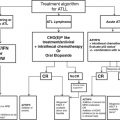© Springer International Publishing Switzerland 2015
Jean-Pierre Droz, Bernard Carme, Pierre Couppié, Mathieu Nacher and Catherine Thiéblemont (eds.)Tropical Hemato-Oncology10.1007/978-3-319-18257-5_57Palliative Care for People with Haematological Cancers
(1)
Department of Palliative Care, Policy and Rehabilitation, King’s College London, Cicely Saunders Institute, London, UK
(2)
African Palliative Care Association, Kampala, Uganda
Keywords
PalliativePainSymptomsTerminalEnd of lifeHospiceDyingDeath1 Recognising the Need for Palliative Care
In 2014, the World Health Assembly passed the first resolution on palliative care. This important step recognised that palliative care is an essential component of the patient’s treatment and care in the face of progressive and incurable disease. The resolution requires each member state to ensure that it provides a conducive policy and legislative environment as well as resources for palliative care education and training, research care and support to patients and families in order to receive quality palliative care.
The resolution was passed in light of a strong body of evidence that palliative care improves patient and family outcomes [1–3], and there are benefits to health systems in that palliative care saves costs due to reduced use of futile interventions and admissions [4–7]. Within an African hospital setting, a palliative care service reduced admissions and length of stay and increased the proportion of patients who achieved home death [5]. The provision of palliative care is an ethical duty for health systems [8].
With respect to haematological malignancies, GLOBOCAN have estimated the numbers of people dying in the world’s regions during 2012 [9]. Within sub-Saharan Africa, estimates are as follows: Hodgkin’s lymphoma n = 3130, non-Hodgkin’s lymphoma n18923, multiple myeloma n = 3457 and leukaemia n = 13,746. In South East Asia, the numbers are 819, 10,350, 1843 and 11,694, respectively. Globally, for less developed regions the figures are 11,891, 74,547, 200,759 and 100,003, respectively. Relatively poorer access to healthcare and fewer curative options make palliative care even more important in low- and middle-income countries.
2 Health Systems and Palliative Care
“Palliative care as defined by the WHO is an approach that improves the quality of life of patients and their families facing the problem associated with life-threatening illness, through the prevention and relief of suffering by means of early identification and impeccable assessment and treatment of pain and other problems, physical”. Importantly, recent evidence has demonstrated that palliative care introduced early in the disease course further improves costs and outcomes [10], which underlines the WHO guidance that palliative care should be provided alongside treatment where appropriate.
Palliative care is by its nature multiprofessional to ensure that the physical, psychological, social and spiritual needs associated with progressive incurable and life-limiting disease are met. The ability to meet needs irrespective of treatment use and disease stage is crucial.
The WHO framework for a public health approach to cancer palliative care identifies the necessary activities [11]. These are identified as policy, medicines availability and education. Policies to ensure that palliative care is recognised and promoted as part of a national health plan are key – indeed Uganda was the first African country to achieve this when in 2004 it introduced a statute that allowed nurses and medical assistants (clinical officers) other than just doctors to prescribe oral morphine for pain control in the palliative care context. Policy can be directly influenced and measured to determine success in facilitating palliative care and drug availability. Drug availability is the next WHO public health strategic component. Although drugs for pain and symptom relief are named on the WHO essential drugs list, opioid consumption for pain relief is woefully inadequate in many low- and middle-income countries. The inadequate availability of opioids and the phenomenon of “opiophobia” as well as the limited number of legally allowed prescribers have led to poor supply and demand, underprescribing and patient fears of consumption. Uganda has been a model country in promoting the safe use of opioids, developing and implementing programmatic approaches [12] that have shown to result in no reported diversion [13]. Lastly, education is essential. Within many parts of the world, palliative care forms a clinical specialty or subspecialty. The availability of specialists in palliative care offers the possibility for these specialists to take referrals of complex cases while performing education and mentorship roles for generalists. This enables all healthcare professionals to integrate palliative care principles into their daily practice.
3 Availability of Palliative Care
Palliative care, as defined by the WHO, is “an approach that improves the quality of life of patients and their families facing the problem associated with life-threatening illness, through the prevention and relief of suffering by means of early identification and impeccable assessment and treatment of pain and other problems, physical, psychosocial and spiritual”.
The WHO/WPCA global palliative care atlas has revealed enormous disparity in the availability of palliative care services [14, 15]. This disparity in availability impacts not only on access to care but on the capacity of specialists to provide education, training and lobbying/advocacy activities. Sadly, almost half of the world’s countries had no identifiable palliative care service. Those countries with the lowest human development index were more often categorised into having no identifiable palliative care service.
4 Needs and Preferences in Palliative Care
An important goal of palliative care is to identify the patient and family’s preferences for advanced care. The variability of preferences reflects the nature of palliative care as a global health clinical and research topic [16]. While palliative care often focuses on “advance directives” and “advance care planning”, most research and guidance have been generated within high-income countries. Research from South Africa has revealed important cultural dimensions of such decision making [17]. In more communal (rather than individualistic) societies, with fewer economic resources, the processes of making and meeting choices may vary greatly [18].
Global evidence also suggests a preference for home death [19]. However, the vast majority of studies have been conducted in high-income countries, and many factors may influence choices. As described above, availability and coverage are far more patchy in low-income countries, and the availability of services to provide appropriate and effective palliative care in the community may greatly influence this choice. Studies from southern and eastern Africa have indeed shown a preference to die in hospital in a scenario of serious illness [20, 21].
While the vast majority of evidence on needs has been generated in high-income countries, recent evidence has identified the high prevalence of life-limiting illness in African referral hospitals [22, 23], the high prevalence of both physical and psychological problems in advanced cancer and the patient/family preference for better communication and information [24].
One population that is particularly neglected in the evidence is children and young people. Despite the relatively high proportion of children facing life-limiting/life-threatening illness (compared to high-income countries), very little is known about their needs, models of care and outcomes [25]. Low-income countries have particularly poor coverage of paediatric palliative care. More research is urgently need to ensure that models of cancer palliative care are developed that are appropriate to health systems and their resources, responsive to cultural preferences and expectations and adequate to scale up to population-level need [26].
5 Unique Palliative Care Needs in Haematological Cancers
The haematological cancers are often diagnosed late because of the various nonspecific symptoms which in turn complicate the patient’s experience. They often present with unique needs which include pancytopenia or decline in all blood cells which in turn result into signs and symptoms associated with haemorrhage, anaemias, infections due to reduced immunity and enlargement of lymph nodes and other internal organs [27]. The care of such patients may require administration of blood products, and therefore the palliative and oncological teams face challenging decisions to make as to when such interventions should be stopped while addressing the other care needs. This calls for evidence-based, patient-centred and ethical considerations as such as decisions are taken to maintain the quality of life while minimising suffering.
Stay updated, free articles. Join our Telegram channel

Full access? Get Clinical Tree





